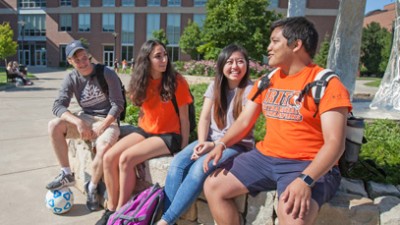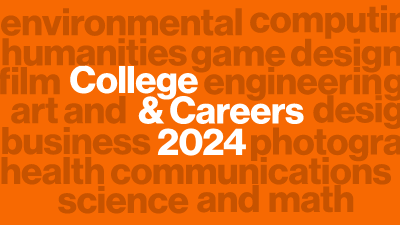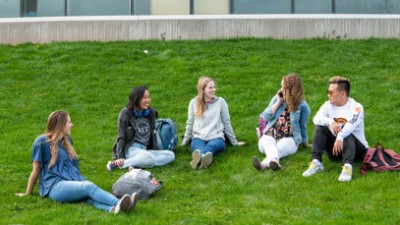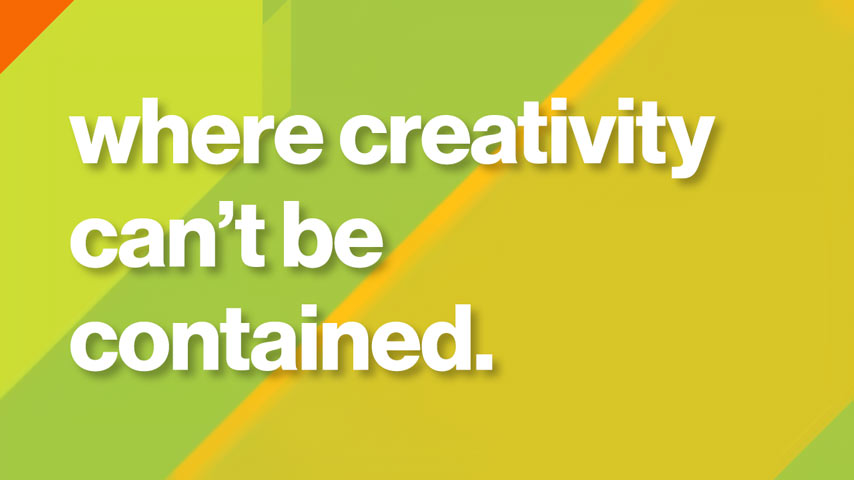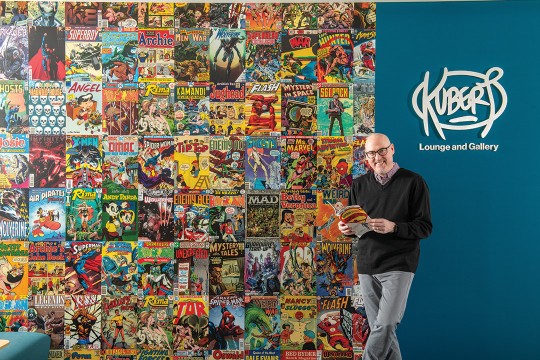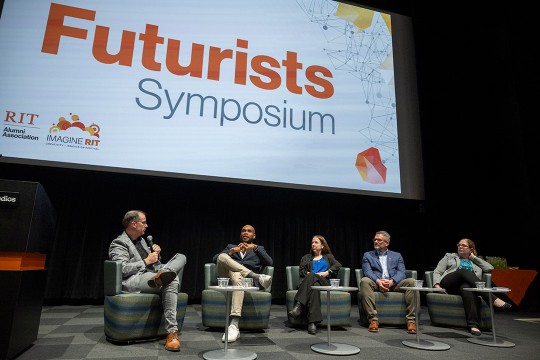Medical Illustration Bachelor of Fine Arts Degree


Medical Illustration
Bachelor of Fine Arts Degree
- RIT /
- Rochester Institute of Technology /
- Academics /
- Medical Illustration BFA
Request Info about undergraduate study
Visit
Apply
facpgd@rit.edu
School of Art
RIT’s medical illustration BFA teaches you to take complex scientific and medical information and distill it into stunning visual images.
Overview for Medical Illustration BFA
Why Study Medical Illustration at RIT
- Industry Work Experience: In collaboration with local hospitals, you will draw from direct observation of surgical procedures and medical treatments in progress
- Portfolio Preparation Workshop: Participation in the annual Pre-College Portfolio Preparation Workshop.
- Prepare for Advanced Degrees: The option to take a two-year Medical Illustration MFA, an advanced scientific illustration program.
What is a Medical Illustrator?
A medical illustrator is a professional artist with advanced education in the sciences (biology, human anatomy, physiology) and in art and design (illustration, 2D/3D/4D digital design, animation, interactive media). They are skilled in creating art that illustrates the things we often cannot see (internal organs of a body, cells and molecules, muscle tissues and tendons) or that need deeper explanation (how a surgery takes place, the inner workings of the human body, how a disease progresses).
RIT’s Medical Illustration BFA
This medical illustration major prepares you to work with scientists, physicians, surgeons, researchers, and other medical specialists to take complex scientific information and distill it into visual images that can be used in a wide range of applications, such as:
- Textbooks
- Brochures
- Infographics
- Interactive models
- 2D and 3D animations
- Motion graphics
- Courtroom exhibits
- Digital presentations
- Educational material
During the first two years of the Medical Illustration undergraduate program, you will focus on developing your drawing and traditional illustration skills. During this time, you’ll attend human biology, anatomy, and physiology classes.
Building on this foundation of science courses, the third and fourth years of the major emphasize 2D and 3D computer illustration and animation. As a third and fourth-year student, you’ll:
- Attend Human Gross Anatomy, a course that includes full head-to-toe dissection in RIT’s Cadaver Lab, one of the few undergraduate cadaver labs in the nation.
- Collaborate with area hospitals to draw from direct observation of in-progress surgical procedures and medical treatments in progress
The medical illustration degree explores all aspects of health care, from the molecular level through the macroscopic and into the theoretical.
Throughout your coursework, you may select elective courses that enhance your studies or enable you to pursue an area of personal or professional interest.
Refine Your Medical Illustration Portfolio
The medical illustration degree requires studio art experience and a portfolio of original artwork.
- View the portfolio requirements
- RIT’s School of Art offers an annual Pre-College Portfolio Preparation Workshop. This two-week visual arts class is designed to help prepare the portfolios of rising high school juniors and seniors for admission to college art programs.
Furthering Your Education in Medical Illustration
Combined Accelerated Bachelor's/Master's Degrees
Today’s careers require advanced degrees grounded in real-world experience. RIT’s Combined Accelerated Bachelor’s/Master’s Degrees enable you to earn both a bachelor’s and a master’s degree in as little as five years of study, all while gaining the valuable hands-on experience that comes from co-ops, internships, research, study abroad, and more.
+1 MBA: Students who enroll in a qualifying undergraduate degree have the opportunity to add an MBA to their bachelor’s degree after their first year of study, depending on their program. Learn how the +1 MBA can accelerate your learning and position you for success.
Graduate Study in Medical Illustration
RIT offers a medical illustration MFA. This is an advanced scientific illustration program and one of only five medical illustration programs at the graduate level in North America, and the only program in the northeast. The two-year program culminates with the production of a thesis project, which requires extensive background research and an original body of art and design work on a complex medical topic.
A virtual career exploration event
50+ future-focused workshops for rising high school seniors to plan for college.
Careers and Experiential Learning
Typical Job Titles
| Multimedia Artist | Medical Illustrator |
| Exhibitor | Freelance Medical Illustrator |
| 2D/3D Medical Animator | 3D Computer Modeler/Animator |
| Medical Interactive/Interface Designer | Medical Web Designer |
| Medical-Legal Illustrator/Litigation Support Specialist | Medical Book/Texts Illustrator |
| Information Graphics Illustrator | Medical Editorial Illustrator |
| Medical Model Designer | Prosthesis Designer/Anaplastologist |
| Forensics Illustrator | Ophthalmologic Illustrator |
| Medical Illustration Educator |
Industries
-
Journalism, Media, and Publishing
-
Performing and Fine Arts
-
Health Care
Cooperative Education and Internships
What’s different about an RIT education? It’s the career experience you gain by completing cooperative education and internships with top companies in every single industry. You’ll earn more than a degree. You’ll gain real-world career experience that sets you apart. It’s exposure–early and often–to a variety of professional work environments, career paths, and industries.
Co-ops and internships take your knowledge and turn it into know-how. An art and design co-op provides hands-on experience that enables you to apply your artistic capabilities in dynamic professional settings while you make valuable connections between classwork and real-world applications.
Cooperative education, internships, and other experiential learning opportunities are encouraged for students in the BFA in medical illustration.
Creative Industry Days
Connect with Design Industry Leaders
RIT’s Office of Career Services and Cooperative Education hosts Creative Industry Days, which connects students majoring in art, design, film and animation, photography, and select computing majors with companies, organizations, creative agencies, design firms, and more. Creative Industry Days are a series of events that allow you to network with company representatives and interview directly for open co-op and full-time employment positions.
Featured Work
Association of Medical Illustrators Award of Merit
May Jiang
An animation visualizing the interconnectedness between different biological structures that was created by May Jiang ‘24 (medical illustration) received notable recognition from the Association of...
Medical Illustration Senior Showcase - 2023
An online exhibition of work by 2023 medical illustration BFA seniors and MFA candidates.
Annual Exhibition
Through a unique partnership with Rochester Regional Health, RIT medical illustration students (BFA and MFA) exhibit their work in Rochester General Hospital’s Werner Medical Library every spring...
Featured Profiles
Profile: Ashley Mastin '21
Ashley Mastin parlayed her experience in RIT's Medical Illustration program into becoming a scientific illustrator for Science magazine.
Marvel-ous Artist
Adam Kubert
Adam Kubert '81 (medical illustration) has used his super drawing talent to make a successful career as a comic artist, working for DC Comics and now exclusively Marvel Comics.
Medical Illustration Labs
Step into some of the medical illustration labs at RIT, where students take complex scientific and medical information and distill it into stunning visual images.
Curriculum Update in Process for 2024-2025 for Medical Illustration BFA
Current Students: See Curriculum Requirements
Medical Illustration, BFA degree, typical course sequence
| Course | Sem. Cr. Hrs. | |
|---|---|---|
| First Year | ||
| FDTN-111 | Drawing I This course is an introduction to the visualization of form, thought, and expression through the drawing process and is the first of two sequential courses that are the foundation of the drawing curriculum in the College of Art and Design. Concepts are introduced by lectures, discussions, and demonstrations which are designed to provide a broad introductory experience. Students will experiment with a wide variety of media, tools, techniques and subjects to develop drawing and problem-solving skills related to form and composition. The focus of the course is to provide awareness of the full range of ways in which drawing is used as a tool for both self-expression and communication. **Fee: A materials fee is required for this course, and an additional course fee applied via student account** Studio 6 (Fall or Spring). |
3 |
| FDTN-112 | Drawing II From observation of still life, the figure, and interior/exterior spaces, Drawing II continues to build on the foundation of the College of Art and Design drawing curriculum. This course continues the study of traditional drawing mediums and techniques while introducing color and a selection of contemporary practices and tools through examining organic and geometric mark making, form, space and value. Core concepts are introduced by lectures, discussions, and demonstrations; the primary assessment method of course work will be through critiques which facilitate growth of both a visual and verbal vocabulary. The focus of the course is to provide awareness of the full range of ways in which drawing is used as a tool for self-expression, communication and continued development of creative practice and problem solving. **Fee: A materials fee is required for this course, and an additional course fee applied via student account** (Prerequisites: FDTN-111 or ITDI-211 or equivalent course.) Studio 6 (Fall or Spring). |
3 |
| FDTN-121 | 2D Design I This course is an introduction to the basic elements and principles of two-dimensional design and is foundational to the College of Art and Design curriculum. The focus of this course is the development of visual and verbal vocabularies as a means of exploring and understanding two-dimensional design. Students will engage with a wide variety of media, tools, and techniques to develop skills while delving into the theoretical and experimentational processes of contemporary art and design. The exploration of historical and cultural themes and concepts intertwined with aspects of personal interpretation and experience will be included in the curriculum. **Fee: A materials fee is required for this course, and an additional course fee applied via student account** Studio 6 (Fall or Spring). |
3 |
| FDTN-122 | 2D Design II This course is the second part of the sequential two-dimensional design curriculum within the College of Art and Design. This course builds on the broad introductory experiences in 2D I; students will expand their visual and verbal vocabulary while exploring advanced design concepts through interdisciplinary activities, practices, and exploration. The themes and concepts explored in this course are intertwined with aspects of personal interpretation and experience alongside historical and cultural themes. **Fee: A materials fee is required for this course, and an additional course fee applied via student account** (Prerequisites: FDTN-121 or equivalent course.) Studio 6 (Fall or Spring). |
3 |
| FDTN-131 | 3D Design I This course presents a progressive study in terminology, visual principles, exploration, concept generation, process, and techniques of three-dimensional design and is foundational to the College of Art and Design curriculum. Using hands-on problem solving, student will develop an informed understanding of the three-dimensional form and space with an emphasis on the elements and principles of visual design and their function as the building blocks and guidelines for ordering a three-dimensional composition. A heightened awareness of form and space will be developed through lecture, assigned projects, and critiques. Students will also develop a personal awareness of problem seeking and solving, experimentation and critical analysis. **Fee: A materials fee is required for this course, and an additional course fee applied via student account** Studio 6 (Fall or Spring). |
3 |
| ILLS-209 | 3D Applications: The Figure Students will build upon their experience in 3D Design I including materials, and building processes, while constructing the human figure. Sculpted figures will portray accurate human anatomic structure, inference of function, and balance. (Prerequisites: FDTN-131 or equivalent course.) Studio 6 (Spring). |
3 |
| MEDG-101 | Human Biology I (General Education – Natural Science Inquiry Perspective) This course is one of a two-course set of courses that explores the biology of the human body. This course focuses on: cells, their structure, and organization; the human reproductive cycle; principle of genetic inheritance; transmission of disease and the body’s defense against disease. Recommended to concurrently take: MEDG-103 Human Biology Laboratory I *Note: Taken alone, this course fulfills the Scientific Principles Perspective. When taken with MEDG-103 the two courses together fulfill the Natural Science Inquiry Perspective Lecture 3 (Fall). |
3 |
| MEDG-102 | Human Biology II (General Education) This course is one of a two-course set of courses that explores the biology of the human body. This course focuses on the examination of the body's structure (anatomy), its function (physiology), the principle of homeostasis that governs the integrated control of all body organ systems, and various disease states (pathology) that affect its health. Recommended to concurrently take: MEDG-104 Human Biology Laboratory II *Note: Taken alone, this course fulfills the Scientific Principles Perspective. When taken with MEDG-104 the two courses together fulfill the Natural Science Inquiry Perspective Lecture 3 (Spring). |
3 |
| MEDG-103 | Human Biology Laboratory I (General Education – Natural Science Inquiry Perspective) This laboratory complements the lecture material of Human Biology I. Experiments are designed to illustrate the dynamic characteristics of a cell during processes of inheritance, development and disease. Recommended to concurrently take: MEDG-101 Human Biology I *Note: When taken with MEDG-101 the two courses together fulfill the Natural Science Inquiry Perspective Lab 2 (Fall). |
1 |
| MEDG-104 | Human Biology Laboratory II (General Education) This laboratory course complements the lecture material presented in Human Biology II. Lab experiments are designed to illustrate the dynamic anatomy and physiology of the human body organ systems. Recommended to concurrently take: MEDG-102 Human Biology II *Note: When taken with MEDG-102 the two courses together fulfill the Natural Science Inquiry Perspective. Lab 2 (Spring). |
1 |
| YOPS-10 | RIT 365: RIT Connections RIT 365 students participate in experiential learning opportunities designed to launch them into their career at RIT, support them in making multiple and varied connections across the university, and immerse them in processes of competency development. Students will plan for and reflect on their first-year experiences, receive feedback, and develop a personal plan for future action in order to develop foundational self-awareness and recognize broad-based professional competencies. (This class is restricted to incoming 1st year or global campus students.) Lecture 1 (Fall, Spring). |
0 |
General Education – First-Year Writing (WI) |
3 | |
General Education – Ethical Perspective |
3 | |
| Second Year | ||
| ARTH-### | Any 100-level ARTH course (General Education-Artistic Perspective) |
3 |
| ARTH-### | Any 100-level ARTH course (General Education-Global Perspective) |
3 |
| FDTN-141 | 4D Design 4D Design introduces students to the basic concepts of art and design in time and space. The course explores elements of moving images such as continuity, still and moving image editing, transitions and syntax, sound and image relations, and principles of movement. Computers, video, photo, sound and lighting equipment are used to create short-form time-based work relevant to students in all majors and programs required to take this course. The course addresses the both historical conventions of time in art and recent technological advances, which are redefining the fields of Fine Art and Design. In focusing on the relations between students' spacing and timing skills, 4D Design extends and supplements the other Foundation courses, and prepares students for further work with time-based media. (Undergraduate Art and Design) Lab 5 (Fall, Spring). |
3 |
| ILLM-507 | Computer Applications in Medical Illustration Students will learn to use industry-standard raster and vector illustration software to create graphics of medical subjects. Students will also use page layout applications to combine digital images with text and other graphic elements. Course work emphasizes creation of illustrations to support medical education and publishing. (Prerequisites: FDTN-111 and FDTN-121 or equivalent courses.) Studio 6 (Spring). |
3 |
| ILLS-214 | Anatomical Illustration This course will provide an in-depth anatomical approach to drawing the figure. Students will practice drawing human anatomy including body and head postures, facial expressions, and hand gestures. Students will learn anatomical proportioning while drawing from observation from models to convey emotions such as anger, sadness, fear, disgust, etc. Students will also learn to use photographic support references when drawing the figure. By the conclusion of the semester students will be able to have intermediate to advanced level anatomical drawing skills. (Prerequisites: ILLS-209 or equivalent course.) Studio 5 (Fall or Spring). |
3 |
| MEDS-250 | Human Anatomy and Physiology I This course is an integrated approach to the structure and function of the nervous, endocrine, integumentary, muscular and skeletal systems. Laboratory exercises include histological examination, actual and simulated anatomical dissections, and physiology experiments with human subjects. (Pre-requisite: (BIOL-123 and BIOL-124 and BIOL-125 and BIOL-126) or (BIOL-123 and BIOL-124) or (BIOL-101 and BIOL-102) or (BIOL-121 and BIOL-122) or MEDG-102 or equivalent course or NUTR-BS or NUTRSC-BS students.) Lab 3, Lecture 3 (Fall). |
4 |
| MEDS-251 | Human Anatomy and Physiology II This course is an integrated approach to the structure and function of the gastrointestinal, cardiovascular, immunological, respiratory, excretory, and reproductive systems with an emphasis on the maintenance of homeostasis. Laboratory exercises include histological examinations, anatomical dissections and physiological experiments using human subjects. (Pre-requisite: (BIOL-123 and BIOL-124 and BIOL-125 and BIOL-126) or (BIOL-123 and BIOL-124) or (BIOL-101 and BIOL-102) or (BIOL-121 and BIOL-122) or MEDG-102 or equivalent course or NUTR-BS or NUTRSC-BS students.) Lab 3, Lecture 3 (Spring). |
4 |
Illustration Professional Elective‡ |
3 | |
Open Elective |
3 | |
General Education – Social Perspective |
3 | |
| Third Year | ||
| ILLM-501 | Human Gross Anatomy An in-depth study of the structure of the human body. Emphasis is on understanding the relationships between anatomical structures as well as their form, texture, and color. Dissection of a human cadaver is supplemented with lectures on the structure and function of the major organ systems. (Prerequisites: MEDS-251 or equivalent course.) Lab 9, Lecture 3 (Fall). |
6 |
| ILLM-502 | Illustrating Human Anatomy Drawings of lab dissections and the skeleton will be translated into illustrations designed to support instruction in Human Gross Anatomy. Course teaches what choices need to be made when translating literal drawings into illustrations that support instruction. The target learner for these illustrations is a student attending Human Gross Anatomy at a graduate level. (Co-requisite: ILLM-501 or equivalent course.) Studio 6 (Fall). |
3 |
| ILLM-503 | 3D Modeling of Organic Forms This course introduces strategies used to create NURBS and polygonal models of organic subjects in a three-dimensional environment. Assignments stress accurate portrayal of proportions, form, and texture. Instruction will also focus on creating lighting and shader networks that emphasize form and are consistent with surface characteristics. (Prerequisites: FDTN-131 or equivalent course.) Studio 6 (Fall). |
3 |
| ILLM-506 | 3D Animation of Organic Forms This course explores animating biomedical subjects and processes in their native environment to create illustrations. Students will be asked to research and create illustrations that animate their findings. Frame by frame animation, blend shapes, non-linear deformers and “rigging” systems will be introduced to permit students to choose the most effective method for creating motion and transformation. (Prerequisites: ILLM-503 or equivalent course.) Studio 6 (Spring). |
3 |
| ILLM-508 | Scientific Visualization Emerging technologies enable scientists to visualize structures that are otherwise invisible to the naked eye. For example, molecular visualization software allows us to construct highly accurate molecular models from X-ray crystallography and other structural data. Cryo-EM and confocal microscopy are revealing the previously unknown structure of cellular organelles. Medical imaging systems allow us to reconstruct the human body in three dimensions from actual patient data (CT scans, MRI, etc.). This course explores the use of these technologies to provide references for traditional artwork and to export models for digital rendering and animation. (Prerequisites: ILLM-501 and ILLM-507 or equivalent courses.) Studio 6 (Spring). |
3 |
CAD Studio Elective§ |
3 | |
General Education – Immersion 1 (WI), 2 |
6 | |
Art History Elective† |
3 | |
| Fourth Year | ||
| ILLM-512 | Surgical Illustration Students observe live surgical procedures and translate their sketches into finished illustrations that are used in medical training, patient education, and litigation. Demonstrations of sketching and rendering techniques are supplemented with lectures on general surgical principles and common procedures. (Prerequisites: ILLM-501 and ILLM-507 or equivalent courses.) Studio 6 (Fall). |
3 |
| ILLM-515 | Contemporary Media I This course will introduce students to computer illustration, animation, and interactive media as applied to contemporary methods of instruction in medicine and allied health. Students will develop interactive design pieces to support instruction lessons for the educational health care field. (Prerequisites: ILLM-506 or equivalent course.) Studio 6 (Fall). |
3 |
| ILLM-516 | Contemporary Media II This is the second of two courses on the development of student-created interactive media designed to assist in the teaching of medicine and allied health. The course will build off the foundation created in Contemporary Media 1. At the completion of this course, students will be able to create advanced topics in two-dimensional computer illustration, animation, and interactive media for instruction in medicine and allied health. (Prerequisites: ILLM-515 or equivalent course.) Studio 6 (Spring). |
3 |
| ILLM-517 | Portfolio and Business Practices (WI-PR) This course will prepare students to enter the workforce in fulltime positions or as freelance illustrators. Students will create a portfolio, personal identity package, and marketing materials. The course content will introduces students to business concepts such as copyright, licensing, pricing, contracts, taxation, and formation of a proper business. (This course is restricted to 4th year students in the ILLM-BFA program who have completed First-Year Writing.) Lab 3, Lecture 2 (Spring). |
3 |
CAD Studio Electives§ |
3 | |
Art History Elective† |
3 | |
General Education – Immersion 3 |
3 | |
Open Electives |
9 | |
| Total Semester Credit Hours | 124 |
|
Please see General Education Curriculum (GE) for more information.
(WI) Refers to a writing intensive course within the major.
Please see Wellness Education Requirement for more information. Students completing bachelor's degrees are required to complete two different Wellness courses.
† Art History electives are non-studio courses searchable in SIS with the Art History attribute of ARTH.
‡ Illustration Professional Electives include the following: Illustration I (ILLS-213), Digital Illustration I (ILLS-219), and Zoological and Botanical Illustration (ILLS-563).
§ CAD Studio Electives are any College of Art and Design course with a studio or lab component, per catalog restrictions.
Admissions and Financial Aid
First-Year Admission
A strong performance in a college preparatory program is expected. This includes:
- 4 years of English
- 3 years of social studies and/or history
- 3-4 years of mathematics
- 2-3 years of science and biology is required.
- Studio art experience and a portfolio of original artwork are required. View Portfolio Requirements for more information.
Transfer Admission
Transfer course recommendations without associate degree
Courses in studio art, art history, and liberal arts. A portfolio of original artwork is required to determine admissions, studio art credit, and year level in the program. View Portfolio Requirements for more information.
Appropriate associate degree programs for transfer
Related programs or studio art experience in desired disciplines. A portfolio of original artwork is required to determine admissions, studio art credit, and year level in the program. View Portfolio Requirements for more information. Summer courses can lead to third-year status in most programs.
Financial Aid and Scholarships
100% of all incoming first-year and transfer students receive aid.
RIT’s personalized and comprehensive financial aid program includes scholarships, grants, loans, and campus employment programs. When all these are put to work, your actual cost may be much lower than the published estimated cost of attendance.
Learn more about financial aid and scholarships
Latest News
-
July 3, 2024
![a clipboard is shown holding a paper with an illustration of a human spine.]()
Medical Illustration Podcast - RIT program faculty interview
PK Visualization's Medical Illustration Podcast talks to Jim Perkins, Department Head of Medical Sciences, Health and Management, along with Glen Hintz and Craig Foster, both associate professors in the School of Art, about the origins of RIT's medical illustration program the accreditation process that made it a Master of Fine Arts program.
-
May 7, 2024
![a man stands next to a wall covered in comic book covers. On the right side of the wall there is a sign that says Kubert Lounge and Gallery.]()
Comics go to College
The comics collection at RIT is growing by leaps and bounds and the new Kubert Lounge and Gallery makes it a visible presence on campus. The interdisciplinary art form is right at home at RIT.
-
April 27, 2024
![5 people are shown on a stage, sitting in gray chairs. The speaker on the far left is holding a microphone speaking to the others. A poster that says Futurists Symposium is shown behind them.]()
University’s ‘futurists’ encourage audience to embrace curiosity during Imagine RIT symposium
Be curious because what if, said RIT alumnus Bob Morrealle, who shared stories of discovery, hope, and confidence during his presentation at the Futurists Symposium, a collection of alumni and faculty offering an insider’s look into the future of technology, the arts, and design. The symposium, held April 26 in the Wegmans Theater, MAGIC Spell Studios, was the official kickoff to Imagine RIT: Creativity and Innovation Festival.
